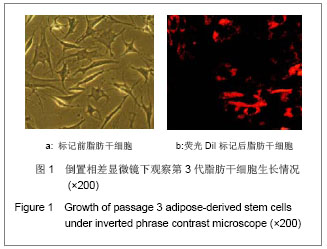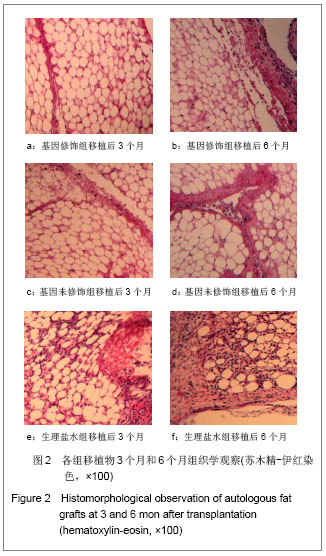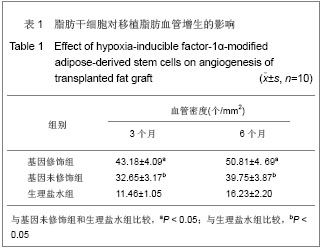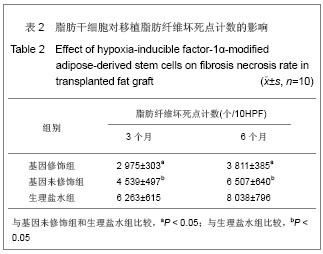| [1] Losken A, Pinell XA, Sikoro K, et al.Autologous fat grafting in secondary breast reconstruction.Ann Plast Surg.2011;66(5): 518-522.[2] Botti G, Pascali M, Botti C, et al.A clinical trial in facial fat grafting: filtered and washed versus centrifuged fat.Plast Reconstr Surg.2011;127(6):2464-2473.[3] Crawford JL, Hubbard BA, Colbert SH, et al.Fine tuning lipoaspirate viability for fat grafting.Plast Reconstr Surg. 2010; 126(4):1342-1348.[4] Avelar RL, Göelzer JG, Azambuja FG, et al. Use of autologous fat graft for correction of facial asymmetry stemming from Parry-Romberg syndrome.Oral Surg Oral Med Oral Pathol Oral Radiol Endod.2010;109(2):e20-25.[5] Yan Z,Wang GM,Hu Y,et al.Zhongguo Meirong Yixue. 2010; 19(12):1784-1785.严志,汪国民,胡煜,等.自体脂肪颗粒移植鼻根局部隆鼻术[J].中国美容医学,2010,19(12):1784-1785.[6] Nguyen A ,Pasyk KA ,Bouvier TN ,et al.Comparative study of survival of autologous adipose tissue taken and transplanted by different techniques.Plast Reconstr Surg. 1990; 85(3): 378-386.[7] Minn KW, Min KH, Chang H, et al.Effects of fat preparation methods on the viabilities of autologous fat grafts.Aesthetic Plast Surg. 2010;34(5):626-631.[8] Zhao JH,Li L,Yang Y,et al.Zhongguo Meirong Yixue. 2011; (8):1232-1237.赵建辉,李龙,杨阳,等.人脂肪干细胞的体外培养鉴定及分化特性[J]. 中国美容医学, 2011,(8):1232-1237.[9] Baran CN,Celebioglu S,Sensoz O,et al.The behavior of fat grafts in recipient areas with enhanced vascularity. Plast ReconstrSurg.2002;109(5):1646-1651.[10] Guo WL,Zhang BL.Zhongguo Xiandai Yaowu Yingyong. 2009; 3(10):32-33.郭万里,张宝林.肝细胞生长因子(HGF)对脂肪移植存活的影响[J].中国现代药物应用,2009,3(10):32-33.[11] Appel TR, Pözsch B, Müller J, et al. Comparison of three different preparations of platelet concentrates for growth factor enrichment.Clin Oral Implants Res.2002;13(5): 522-528.[12] Gundersen H, Bendtsen T, Korbo L,et al.Some new, simple and efficient stereological methods and their use in pathological research and diagnosis. APMIS 1998;96:379-394[13] Eppley BL, Smith PG, Sadove AM, et al.Experimental effects of graft revascularization and consistency on cervicofacial fattransplant survival.J Oral Maxillofac Surg.1990;48(1):54-62.[14] Ma H,Calderon TM,Fallon JT,et al. Hepatocyte growth factor a survival factor for endothelial cells and is expressed in human atherosclerotic plaques. Atherosclerosis, 2002,164(1):79-87. [15] Duan HF, Wu CT, Wu DL, et al. Treatment of myocardial ischemia with mesenchymal stem cell overesspression hepatocyte growth factor.Mol Ther.2003;8:467-474.[16] Wu JY,Li GC, Cai YB.Zhongguo Xinyao yu Linchuang Zazhi. 2009;28(1):7-10.伍俊妍,李国成,蔡尤彪.不同缓释体系下基因重组型碱性成纤维细胞生长因子对脂肪移植终体积的影响[J].中国新药与临床杂志,2009,28(1):7-10.[17] Minn KW, Min KH, Chang H, et al.Effects of fat preparation methods on the viabilities of autologous fat grafts.Aesthetic Plast Surg.2010;34(5):626-631. [18] Zaman K,Ryu H,Hall D,et al. Protection from oxidative stress-induced apoptosis in cortical neuronal cultures by iron chelators is associated with enhanced DNA binding of hypoxia-inducible factor 1 and ATF-1/CREB and increased expression of glycolytic enzymes,p21(wafl/cip1),and erythrnpoietin . J NeUrosci.1999;19 (22):9821-9830.[19] Xiaowei H, Ninghui Z. The experimental study of hypoxia-inducible factor-1α and its target genes in spinal cord injury. Spinal Cord.2006;44(1):35-43.[20] Ju Y, He M, Mao B. Sequential changes of hypoxia-inducible factor 1 alpha in experimental spinal cord injury and its significance.Chin J Traumatol.2002;5(2):103-106.[21] Raheja LF, Genetos DC, Wong A, et al.Hypoxic regulation of mesenchymal stem cell migration: the role of RhoA and HIF-1α.Cell Biol Int.2011,35(10):981-989.[22] Zou D, Han W, You S, et al.In vitro study of enhanced osteogenesis induced by HIF-1α-transduced bone marrow stem cells.Cell Prolif.2011;44(3):234-243. [23] Gao W, Ma S, Qiao X, et al.Adipose-derived stem cells accelerate neovascularization in ischemic diabetic skin flap via expression of hypoxia-inducible factor-1α.J Cell Mol Med. 2011;10(11):1582-4934.[24] Marignol L,Lawler M,Coffey M,et al. Achieving hypoxia inducible gene expression in tumors.Cancer Biol Ther.2005; 4(4): 359-364. |




.jpg)
